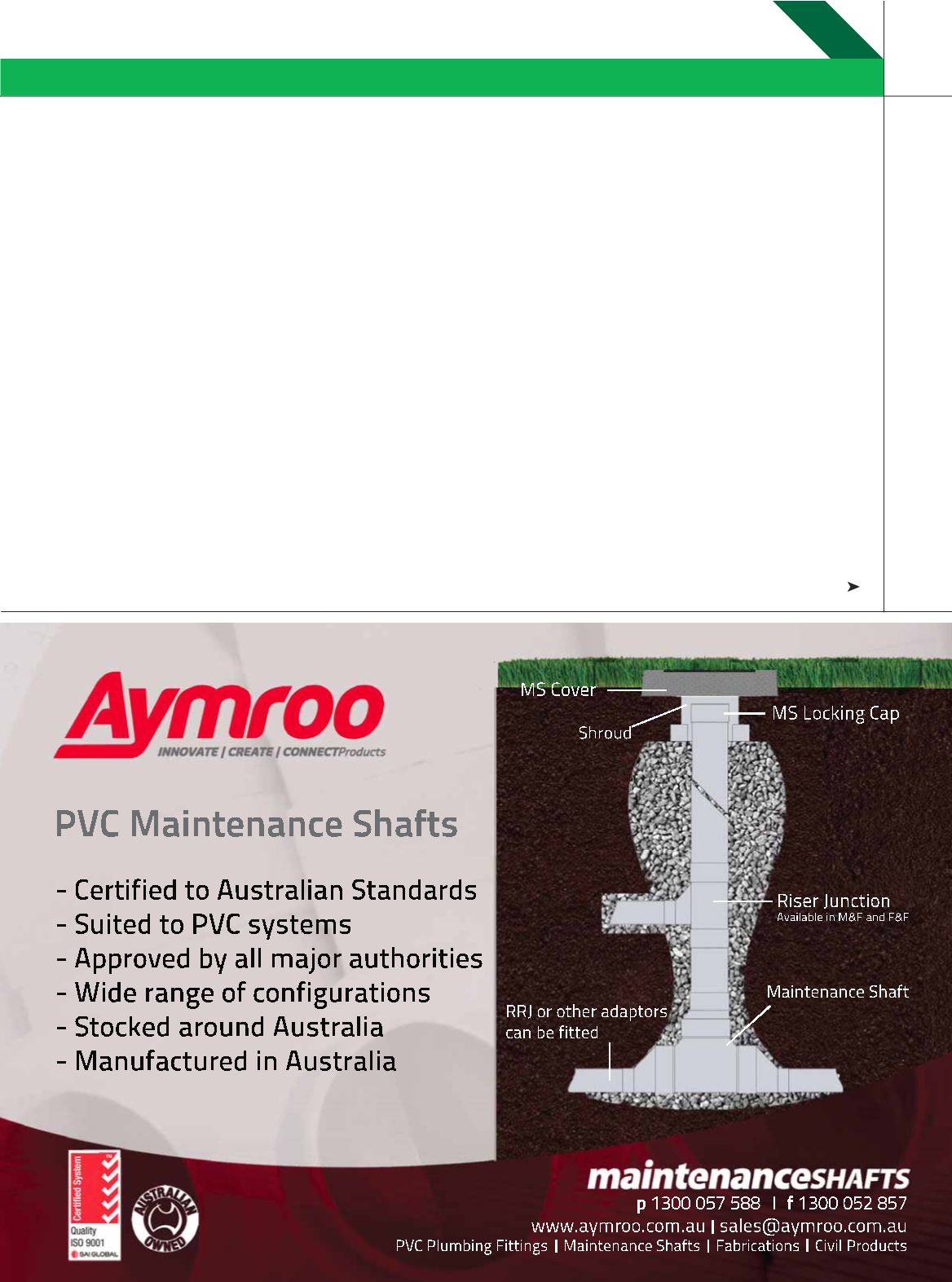

PLUMBING CONNECTION
AUTUMN 2015 77
2013 requires a certain pressure at the control device inlet
and anything less could lead to criticism – or litigation, in
which fault may be apportioned due to non-conformance.
In most cases domestic appliances operate at 1kPa.
However, failure to meet AS/NZS 5601-2013 and the
manufacturer’s recommended operating pressure has the
potential to result in incomplete combustion.
This may not be immediate, but it could happen over time.
Any flame not burning correctly can generate carbon monoxide
and cause carbon build-up in the burner or appliance.
SETTING AND ADJUSTING
In years gone by, gas authorities such as the Gas & Fuel
Corporation of Victoria and Australian Gas Light trained and
deployed their own appliance service fitters.
Besides selling appliances, the service personnel carried
out maintenance and installation of gas appliances, and
commissioned the completed installation – which included
setting the gas meter outlet pressure.
I never set the outlet pressure from a gas meter any lower
than 1.25kPa. This was quite simple when the meter had a
test point at the outlet.
Not all gas meters had a test point at the meter outlet
years ago, and that’s the case even today. In Victoria we
were trained to drill and tap the fitting line at a point close
to the meter and insert a gas cock for pressure testing. It
would be removed later and the tapping point plugged off for
safety.
A second method was to connect a pressure test piece.
One of the gas cocks on the test piece had an OBA injector
drilled out to 1.85mm to simulate a burner operating when
the gas cock was open.
A manometer was then connected to the other gas cock
on the test piece and a flowing pressure taken. Where
necessary, the meter regulator was adjusted to 1.25kPa ±
50Pa.
WHERE DOES THAT LEAVE US?
Drilling and tapping a gas fitting line is not practised today
and might not be condoned, as was the case in some states
in the past.
Fitting lines are now not galvanised wrought iron pipe, as
other cost-effective materials are now used, eg: copper and/
or multi-layer piping.
















